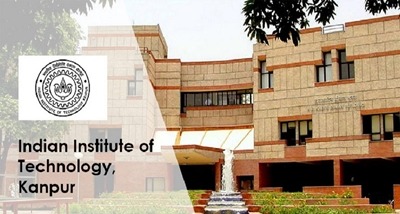The Indian Institute of Technology Kanpur (IITK) has announced the development of ‘Planar Trefoil Knot Antennas,’ which could revolutionize the communication industry. It was developed by Saurabh Shukla, a Ph.D. student, and Prof. Ayyangar Ranganath Harish of IIT Kanpur’s Department of Electrical Engineering. For its new applications in the communication field, the invention was granted Indian Patent No. 431872.
The antenna industry is expected to rise rapidly in the next years as a result of greater use of wireless systems, wireless communications, and the growing use of antennas in consumer electronics such as smartphones, laptops, wearables, tablets, and other devices. Furthermore, the industry is expected to profit from a significant increase in demand for smart antennas as a result of technical improvements in this category.
IIT Kanpur’s concept could be a beneficial addition to this developing sector. “This is a significant technological advancement with far-reaching implications for India’s communication and other industries,” said Prof. Abhay Karandikar, Director of IIT Kanpur, on Monday. The invention exemplifies the genius and experience of our IIT Kanpur researchers. Its ability to generate both omnidirectional and directed patterns gives it a competitive advantage in the market. We predict that our concept will change the way antennas are utilized in a variety of applications, enhancing wireless systems and meeting the growing demand for smart antennas.” The ‘Planar Trefoil Knot Antennas’ mark an important milestone in the communication industry by giving unique applications.
This innovative design can generate both omnidirectional (radiating and receiving energy 360 degrees in the horizontal plane surrounding the antenna) and directed patterns, providing outstanding adaptability for a wide range of end-users. This technology has the potential to benefit telecommunications, healthcare, consumer electronics, aerospace, defense, and other industries.
The increasing use of wireless systems and communications, as well as RFID (radio-frequency identification) tags for security and wireless computer networks, will drive the antenna industry in the coming years, as will the increased use of antennas in various consumer gadgets. The adoption of 5G technology, as well as the emphasis on developing PCB (printed circuit boards), LCP (liquid crystalline polymers), and MPI (modified polyimide) solutions, all contribute to the anticipated growth.
The ‘Planar Trefoil Knot Antennas’ technology provides a novel antenna for use in WIFI, WLAN, RFID, indoor communication systems, radar systems, and other fields. In compared to the market’s existing huge 3D knot antennas, this innovation offers a tiny and cost-effective alternative that can be easily inserted onto PCBs and occupies less space.
While the market potential is promising, there are significant challenges to overcome, including high production costs and the bulky construction of standard antennas. The ‘Planar Trefoil Knot Antennas’, on the other hand, overcome these limitations by offering a practical and efficient alternative.
With the successful creation of ‘Planar Trefoil Knot Antennas’ and the issuing of the Indian Patent, IIT Kanpur proves its dedication to pushing the boundaries of innovation and technology.
Source:DDN








 Finance
Finance







